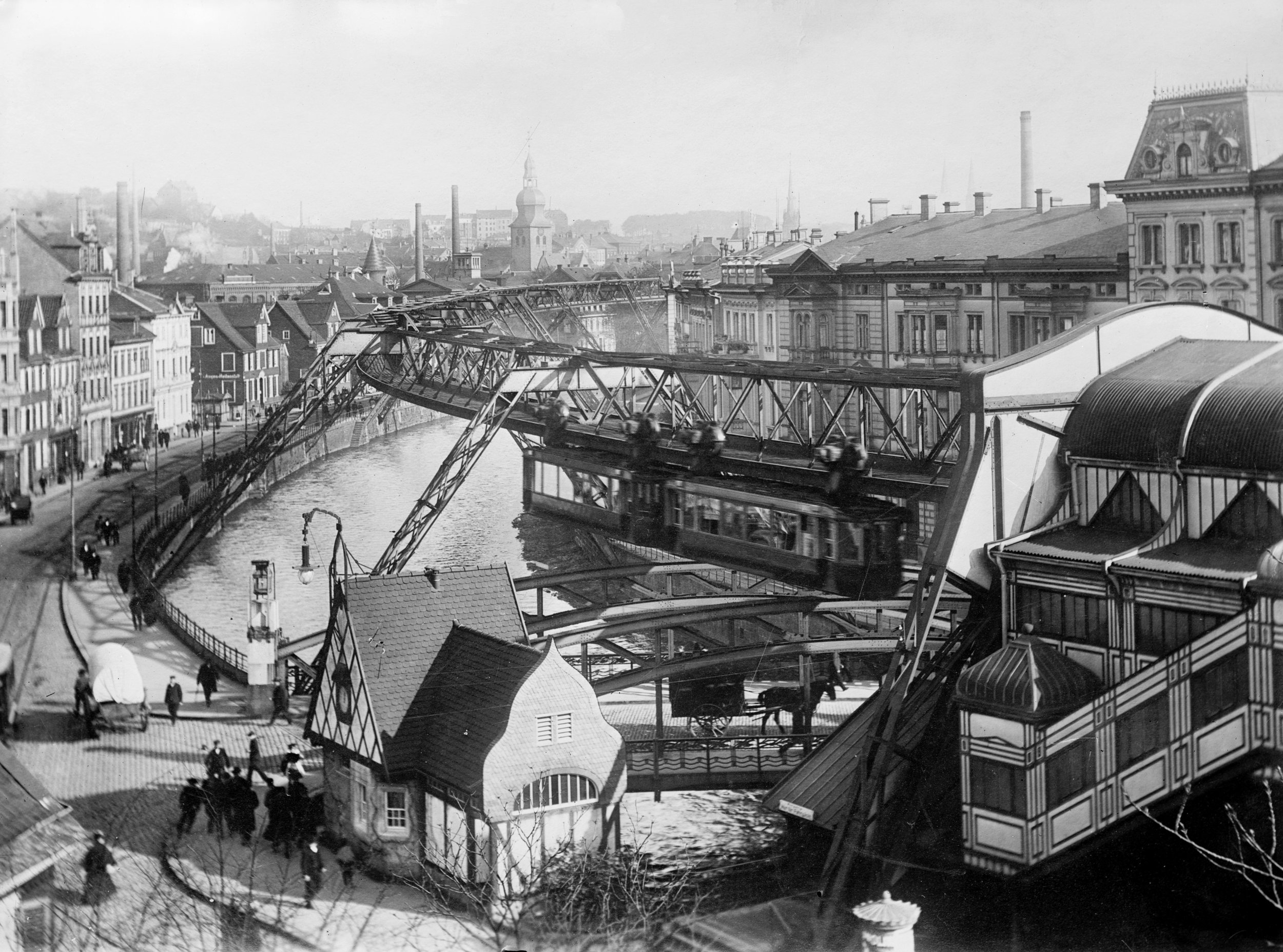Could the United States learn from a 1900’s electric elevated railway? Yes.
1913 Wuppertaler Schwebebahn, Station: Werther Bruecke (Source:https://commons.wikimedia.org/wiki/File:Wuppertaler_Schwebebahn_c1913_LOC_03961u.jpg)
The Wuppertal Schwebebahn, also known as the Wuppertal Suspension Railway, is a historic suspension railway located in Wuppertal, Germany. It was originally named the "Eugen Langen Monorail Overhead Conveyor System" after its designer, and it is recognized as the oldest electric elevated railway with hanging cars in the world, unique to Germany. The railway was constructed between 1897 and 1903 and first opened in 1901, playing a crucial role in the development and eventual unification of the surrounding cities into what is now Wuppertal. It runs for 13.3 kilometers, mostly above the River Wupper, carrying approximately 25 million passengers annually as of 2008.
The idea for such a transportation system dates back to 1824, when Henry Robinson Palmer of Britain presented the concept of a single-rail suspension railway. Friedrich Harkort, a Prussian industrialist, saw potential in this idea for transporting coal in the Wupper valley and set up a demonstration in 1826. The actual construction for the Schwebebahn began in 1898 and was overseen by Wilhelm Feldmann, with sections opening progressively from 1901 to 1903. It was closed during World War II due to damage but was reopened in 1946.
Schwebebahn between Adlerbrücke and Alter Markt. Source: Max Grobecker - https://www.flickr.com/photos/dergrobi/27539703655
In the modern era, the Schwebebahn has undergone significant updates and modernization. The supporting frame was largely modernized since 1997, and many stations have been reconstructed. Unfortunately, an accident in 1999 and delivery problems delayed the modernization process, which was completed and fully reopened in 2013. A new fleet of trains, called the Generation 15, was introduced starting in 2015, featuring various modern amenities and energy recovery systems during braking. (Source: https://schwebebahn.de/en, and Wikipedia)
The United States could learn from the Wuppertal Schwebebahn in several areas:
1. Historical Preservation and Modernization: Embracing historical transport systems while incorporating modern technology to meet current standards, as seen with the Schwebebahn's modernization efforts and train replacements.
2. Public Transport Infrastructure: Investing in and maintaining unique and efficient public transport solutions that can reduce traffic congestion and provide reliable service.
3. Urban Planning: Integrating transport solutions into urban planning to support the growth and development of cities in a sustainable manner.
4. Safety and Maintenance: Implementing rigorous safety checks and continuous maintenance programs to ensure the longevity and reliability of transport systems.
5. Environmental Sustainability: Adopting energy recovery systems and eco-friendly practices in public transportation to reduce carbon footprint.
This idea can use existing right of way. To design an elevated train using existing highway rights of way, a comprehensive feasibility study would first assess the suitability of the highway for such integration. The design would need to align with the highway's structure, potentially utilizing central medians or airspace above traffic lanes. Support pillars would be strategically placed to minimize interference with road usage, and prefabricated construction modules could expedite the build with less impact on highway function. Stations would be designed for optimal safety and connectivity, with a keen eye on environmental considerations to mitigate noise and pollution. Throughout this process, engaging with the public and local stakeholders would be essential to ensure the project meets community needs and garners support.


